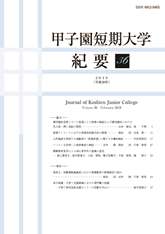Volume 36
Displaying 1-7 of 7 articles from this issue
- |<
- <
- 1
- >
- >|
Scientific Articles
-
2018 Volume 36 Pages 1-10
Published: February 28, 2018
Released on J-STAGE: May 09, 2018
Download PDF (2177K) -
2018 Volume 36 Pages 11-16
Published: February 28, 2018
Released on J-STAGE: May 09, 2018
Download PDF (786K) -
2018 Volume 36 Pages 17-25
Published: February 28, 2018
Released on J-STAGE: May 09, 2018
Download PDF (948K) -
2018 Volume 36 Pages 27-31
Published: February 28, 2018
Released on J-STAGE: May 09, 2018
Download PDF (934K) -
2018 Volume 36 Pages 33-42
Published: February 28, 2018
Released on J-STAGE: May 09, 2018
Download PDF (756K)
Reports
-
2018 Volume 36 Pages 43-46
Published: February 28, 2018
Released on J-STAGE: May 09, 2018
Download PDF (786K) -
2018 Volume 36 Pages 47-53
Published: February 28, 2018
Released on J-STAGE: May 09, 2018
Download PDF (701K)
- |<
- <
- 1
- >
- >|
